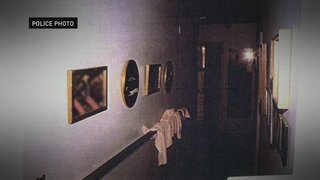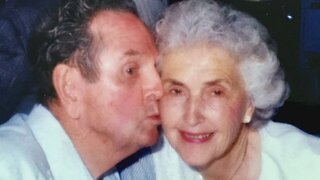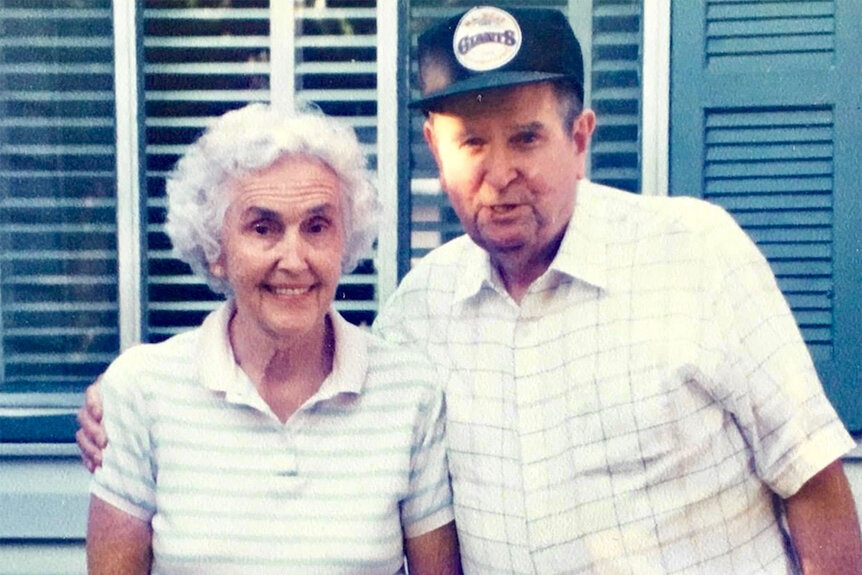Create a free profile to get unlimited access to exclusive videos, breaking news, sweepstakes, and more!
'He Would Have Done Anything For Her': Family Fights To Prove Father's Innocence After Mom's Suicide Leads To His Arrest
The media dubbed Nelson Galbraith "the Red Sash Murderer," but the couple's children never stopped trying to prove his innocence.
What started out as a routine visit became the start of a years-long nightmare for the Galbraith family.
Bill Galbraith and his wife, Nancy, had gone to visit his parents, Nelson and Josephine, at their home in Palo Alto, California in September 1995.
When Bill went to check on his mother in her bedroom, he made a disturbing discovery: Josephine lying dead in her underwear with a red sash tied around her neck. The 76-year-old had cuts on her wrists and elbows, and she was bleeding.
Michael Yore, a retired detective with the Palo Alto Police Department, was among those called in to investigate the suspected suicide, and he recalled that Josephine’s husband, Nelson Galbraith, behaved strangely when he was first questioned.
“Nelson wasn’t emotional. It seemed odd,” he told “Accident, Suicide or Murder,” airing Saturdays at 6/5c on Oxygen.
Nelson said he was in the living room at the time she died and had slept through the entire ordeal, and the Galbraith family confirmed Nelson was known to sleep through loud noises because of his narcolepsy.
Parts of the crime scene, however, also seemed strange to Yore.
A bucket had been placed underneath Josephine’s arm to catch the blood as it hung over the bed. The sash had been wrapped three times around, and double-knotted after each loop, making it extremely difficult to untie.
There was also bloody razor blade left on the nightstand, and an eight-inch butcher knife, with blood on the blade but not the handle, was sitting atop a nearby dresser.
“The sash had no blood on it. She had blood on both hands. She would have had to get blood on the sash,” Yore told producers. “In the bucket, there was a small amount of blood coating the bottom of the container, and [there were] a number of tissues in there that had blood on it.”
Together, the scene begged one question: “How could she have done this to herself?” Noam Levey, a former crime reporter for the San Jose Mercury News, told producers.
Nelson and Josephine had been, by all accounts, a normal couple. High school sweethearts who married young, the pair had six children together, but like anyone, they also experienced some problems.
Later in life, the two separated for a time before reconciling and moving into a new house together — the home in Palo Alto where Josephine took her last breaths.
They were also affected by health issues. Josephine suffered an injury in her lower back that left her with chronic pain, and she was depressed, her family recalled to producers.
She was later diagnosed with Parkinson’s disease, which only fueled her depression. Many in her family, as well as officials, believed that the suicide theory was a plausible one.
Police listed the manner of death in their report as a possible suicide, while the coroner investigator’s preliminary ruling was that Josephine had died from self-asphyxiation.
Detective Yore, however, had a hunch that something else may have been afoot, and he grew more suspicious when an autopsy was completed at the Santa Clara County Coroner’s Office. The medical examiner ruled that Josephine had died during strangulation — but no manner of death was listed.
Stoking that suspicion, when Josephine’s death certificate was issued, her cause of death was listed as “pending,” while the manner of death was listed as “pending investigation.”
Josephine’s loved ones continued to believe that she’d committed suicide. In the past, she’d mentioned wanting to end her own life, and a week before her death, she had been committed to a psychiatric hospital on a 48-hour hold.
But Yore continued to investigate.
“As an investigator, you have to follow the evidence,” Yore told producers. “She had blood on her fingers and her hands, but there’s no blood on the sash. Her bloody hands didn’t touch that sash. There’s no blood on the handle of the knife. Either she wiped her hands clean, or she didn’t touch the handle of that knife. These are facts that you can’t ignore.”
Yore discovered more unusual pieces of evidence as we went on: On a handwritten autopsy worksheet, someone had written “strangled by assailant” as the manner of death, and above that, a circled letter H, suggesting homicide. Despite this, Josephine’s official manner of death had not been changed or updated at all.
A month later, Palo Alto police announced that they were investigating the case as a homicide, and that her husband was considered a suspect
It was a move that shocked and offended the Galbraith family. “Frankly, I was insulted. He would have done anything for her to protect her,” the couple's son, Richard Galbraith, said.
The medical examiner later amended Josephine’s death certificate, officially listing her death as a homicide on the basis that she likely lacked the physical strength to commit suicide, due to arthritis and early onset Parkinson’s disease.
This didn’t sit well with the Galbraith children, who told producers that their mother only had arthritis in her back, while their father had arthritis throughout his entire body.
“Nelson Galbraith had rheumatoid arthritis so bad he couldn’t even tie his own shoes,” Nelson’s attorney, Philip Pennypacker, told producers.
Still, Yore suspected that Nelson had killed his wife, and while trying to track down a motive, he discovered the couple had divorced, and that Josephine financially supported them both.
But the Galbraith children rejected the idea that their father was driven by money to kill. “My dad’s one of the last people in the world that cares anything about money,” Richard told producers.
Despite the family’s prolonged protests, more than a year after Josephine’s death, the District Attorney’s Office decided to pursue charges against Nelson, and authorities arrested him at his home for first-degree murder.
“They came out at gunpoint, as my dad was taking the garbage out, with his grandkids there,” son Donald Galbraith told producers. “And my dad looked at the officer and said, ‘What are you gonna do, shoot me?’”
Nelson spent three days in custody before being released on a $500,000 bond, but the damage had been done. Media outlets picked up the story, and Nelson was referred to as the “red sash murderer.”
The case had a devastating effect on all the Galbraiths, and it drove them to search feverishly for information that could prove their father’s innocence. Soon, it was Donald who happened upon a piece of information that changed everything.
The autopsy report stated that the loop in the sash that Josephine used measured only 2 and a half inches in diameter, which Donald found strange because there had been no damage to her neck.
When Richard showed the autopsy report and crime scene photographs to a pathologist he knew, he informed Richard that “a 2-and-a-half-inch loop would have decapitated” Josephine. The Galbraiths also spoke to another forensic pathologist who believed the finding was “fraught with error.”
“It was going to boil down to a battle of experts,” Pennypacker told producers.
Although the prosecution refused to dismiss the case, they did propose a deal. If Nelson pleaded guilty, they would drop the first-degree murder charge to second-degree manslaughter with no time served.
“My dad said, ‘Tell ‘em to go to hell,’” Richard said.
Nelson’s case went to trial in August 1998, and prosecutors argued it was physically impossible for Josephine to have killed herself, while the defense argued that Nelson’s own health issues prevented him from being able to tie the knots.
At the conclusion of the weeks-long trial, the jury took less than one day to come to their verdict: not guilty. “We were overjoyed,” Donald told producers. “This cloud that had been over us for all these years was finally lifted.”
Although Nelson was acquitted, the family’s saga with California officials did not end there. One year later, Nelson sued the state, and the family made the decision to have their mother’s body exhumed so that a second autopsy could be performed.
It was confirmed Josephine died by suicide, and the civil lawsuit resulted in a $400,000 settlement with an official apology from the state. Unfortunately, Nelson died in September 2002 before the settlement was reached, and he never knew the outcome of the case.
For more information on the case, watch “Accident, Suicide or Murder” now at Oxygen.com.
Tune in for new episodes every Saturday at 6/5c.























